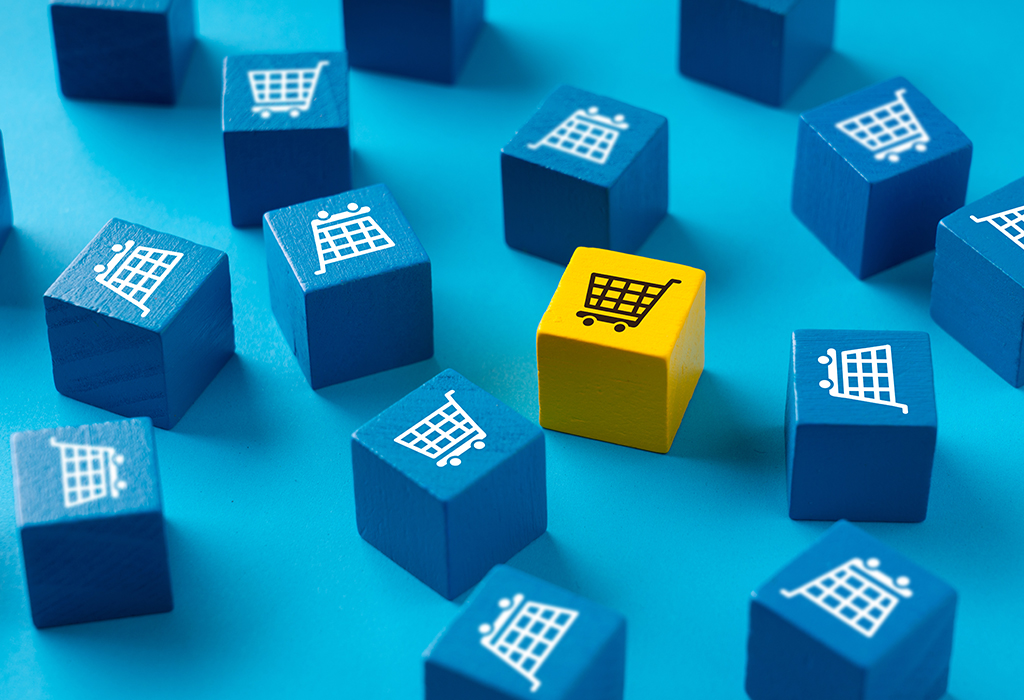Amazon—the eCommerce titan famous for its affordable prices, streamlined ordering processes, and fast delivery—has set the standard by which all eCommerce sites are judged. Whether B2C or B2B, eCommerce sites are now held to the same standard by consumers who expect frictionless experiences and instant gratification.
Author Radiana Pit | Copperberg

Photo: Freepik
But can the B2B sector truly adhere to the same Amazon-like standards as the B2C sector? The pandemic, especially, inspired many to believe so. Work from home during the crisis didn’t only blur the lines between the personal and professional lives of people—it also blurred the lines between the expectations of B2C and B2B consumers.
This didn’t just happen because of the pandemic. B2B consumers are, after all, individual B2C consumers who are wearing a decision-maker title or representing a company. Naturally, they come to expect the same online shopping experience at work as they do in their personal lives. But that may not entirely be a fair expectation.
Key differences between B2C and B2B eCommerce
There are several reasons why it’s rather unfair to hold B2B eCommerce to the same standard as B2C eCommerce. Consumers don’t go through the same buying process, no matter how similar some of the stages may be.
Of course, before a purchase, almost everyone does product research whether they buy from a B2C or B2B shop using mobile devices and expecting accurate product information. But this is where similarities end and differences begin.
So, let’s take a look at some of the key differences between B2C and B2B eCommerce to understand why it’s necessary to adjust expectations while also efficiently meeting customer demands.
1. Target audience
In the B2C space, the target audience can be segmented by different demographics and profiled on an individual level for marketing purposes. Things are not quite the same in the B2B space. Although segmentation and profiling are common practices, B2B sellers don’t typically target individual consumers but decision-makers representing different companies in the industries that interest them.
In the past, decision-makers involved in the B2B buying process consisted of baby boomers and members of generation X who networked at conferences, made transactions in person, and sought information through catalogs or printed ads.
Today, millennials have the most purchasing power in the B2B buying process. And millennials expect more accurate data and speed than their predecessors. They are also tech-savvy consumers who see the value and convenience of a frictionless online shopping experience.
2. Buyer intent
B2C consumers make a lot of small purchases and they rarely spend a lot of time considering all aspects of their buying decision. Also, B2C consumers are impulse buyers—and Amazon’s user interface (UI) is designed to facilitate impulse buying behavior. The same cannot be said about B2B consumers, who make larger and more expensive purchases that are often considered with the return on investment (ROI) in mind.
Because of the nature of such a transaction, more stakeholders are involved in the decision-making process and, as a seller, you have to convince all of them to make the purchase, not just the one looking at the product on your website.
3. Decision-making process
The B2B buying process differs greatly from the B2C one. As mentioned, transactions are larger and there are more stakeholders involved in the decision-making process. Because of this, deciding to buy a product can take weeks, months, and sometimes even years if the purchase is big enough.
B2B sellers can expedite the decision-making process by putting out comprehensive and accurate product information so that every stakeholder from research to procurement can easily access the information they need.
Beyond the research phase, stakeholders will evaluate available solutions and finally select a supplier that makes the most sense to them. And that oftentimes happens to be the supplier that made it the easiest for them to find the solution and evaluate it.
4. Customer lifecycle
Although the B2B and B2C customer lifecycles are similar, one of the key differences between them is lead nurturing. B2B sellers invest more in direct sales and customer support than their B2C counterparts—and that’s because a B2B purchase is always an opportunity to close a long-term deal or secure a partnership.
For example, an original equipment manufacturer (OEM) usually does more than selling a piece of equipment to a customer. They usually sign an agreement to service the customer with maintenance, spare parts, and more in the long term. While service is still provided in the B2C sector as well, it’s not nearly at the same level as it is in the B2B one.
5. Order fulfillment and shipping
Whether you made a purchase for your company or yourself, you want that product delivered to you in a time-efficient and cost-effective manner as safely and reliably as possible. And for the most part, both B2B and B2C sellers are trying to deliver on this customer expectation.
But with Amazon shaping this expectation with next-day delivery for many products, the time consumers are willing to wait has started to significantly decrease. As such, shipping expectations have started to change and B2B sellers are feeling the pressure to provide the same shipping experience as Amazon. However, for larger purchases, B2B buyers are willing to wait, especially if they get a discount on their order.
Turning differences into differentiators through know-how
So, B2B eCommerce is different from the B2C one, now what? This knowledge is unlikely to change customer expectations overnight and B2B sellers need to meet demands regardless if those expectations are fair or not.
Try as they might, most B2B sellers are unable to provide the Amazon-like experience consumers have come to know and expect. And although it’s good to find inspiration in B2C eCommerce for better shopping experiences, it’s even better to adapt that inspiration to fit your niche.
More and more B2B sellers are using marketplaces and platforms for networking, content, development, and payments to mimic the Amazon-like experience consumers have come to expect. But that’s not enough to stand out, especially now when everyone else has jumped on this trend as well. And even so, this still doesn’t solve many of the differences between B2C and B2B eCommerce—nor should it do that.
The key to successfully competing in the current eCommerce landscape is to turn those five differences previously described into differentiations through know-how—not emulation. For B2B sellers and OEMs, creating value-added services is one of the best ways to ensure customer satisfaction and drive sales, even in the absence of an Amazon-like experience. And it’s also quicker and more effective than struggling to emulate the aforementioned online shopping experience.
Considering that the target audience in the B2B sector consists of decision-makers who intend to make expensive large volume purchases, spend a long time researching your product, may consider you as a long-term supplier, and are willing to wait a while for delivery, you have a unique opportunity to capitalize on your know-how. Depending on your business, consider expanding your offering with:
- Warranties or an agreement to respond to certain incidents with your product;
- Product manuals consisting of different types of visual and audio content to assist product managers and decision-makers;
- Warranty of spare parts and other accessories to address equipment malfunction;
- Inventory management to fine-tune the process of storing and selling spare parts;
- Predictive maintenance or predictive service to address issues before they occur and ensure equipment uptime.
Leverage what you know you do well to deliver more value to your customers. While you still need to focus on their online experience, you should also consider their life cycle, long-term experience with your products, and how you will respond to their needs as per your agreement.
B2C sellers don’t have to typically worry about the same things as B2B sellers so, of course, they will focus more on elevating the online shopping experience and expediting deliveries. But in the B2B world, stakes are higher, transactions are larger, orders are bigger, and the pace is steadier as a result—use that to your advantage.






























